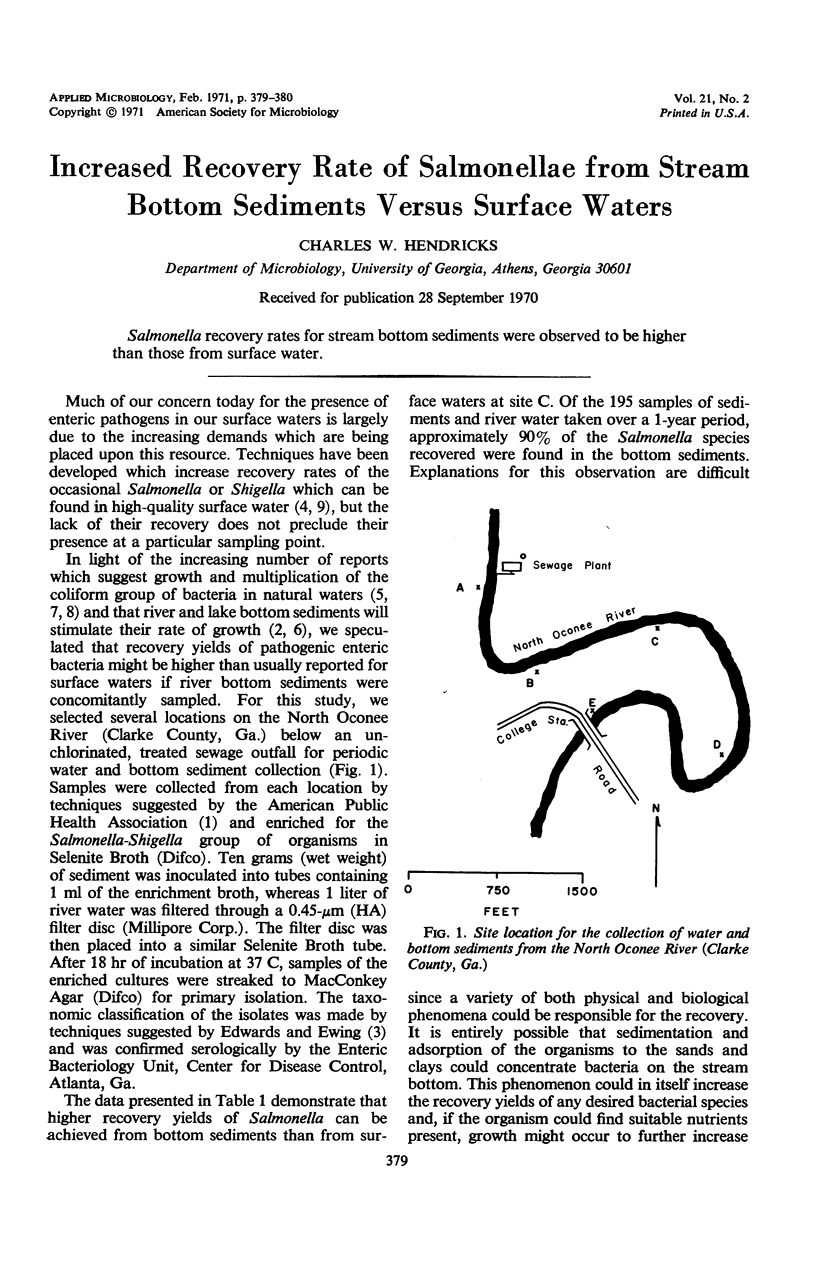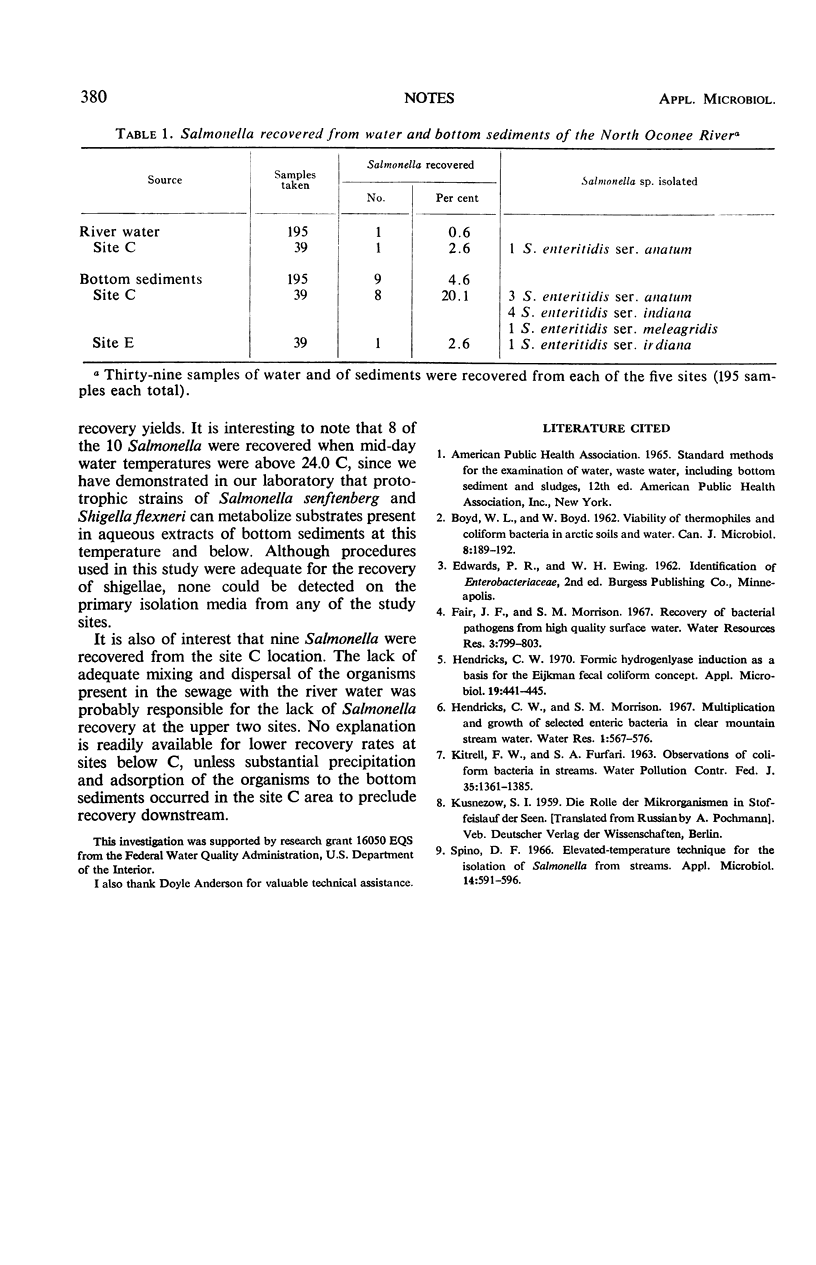Abstract
Salmonella recovery rates for stream bottom sediments were observed to be higher than those from surface water.
Full text
PDF

Selected References
These references are in PubMed. This may not be the complete list of references from this article.
- BOYD W. L., BOYD J. W. Viability of thermophiles and coliform bacteria in arctic soils and water. Can J Microbiol. 1962 Apr;8:189–192. doi: 10.1139/m62-024. [DOI] [PubMed] [Google Scholar]
- Hendricks C. W. Formic hydrogenlyase induction as a basis for the Eijkman fecal coliform concept. Appl Microbiol. 1970 Mar;19(3):441–445. doi: 10.1128/am.19.3.441-445.1970. [DOI] [PMC free article] [PubMed] [Google Scholar]
- Spino D. F. Elevated-temperature technique for the isolation of Salmonella from streams. Appl Microbiol. 1966 Jul;14(4):591–596. doi: 10.1128/am.14.4.591-596.1966. [DOI] [PMC free article] [PubMed] [Google Scholar]


